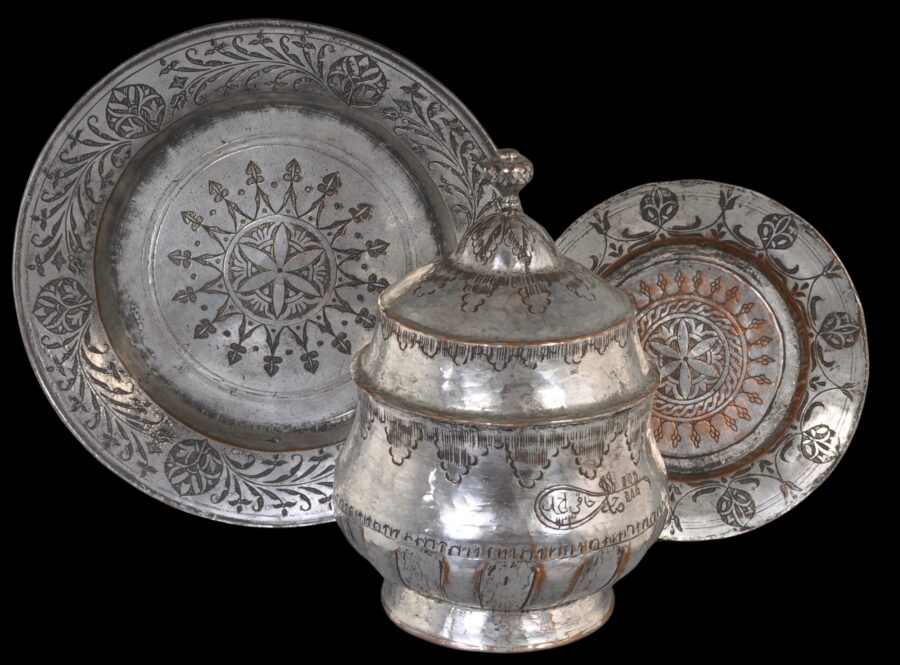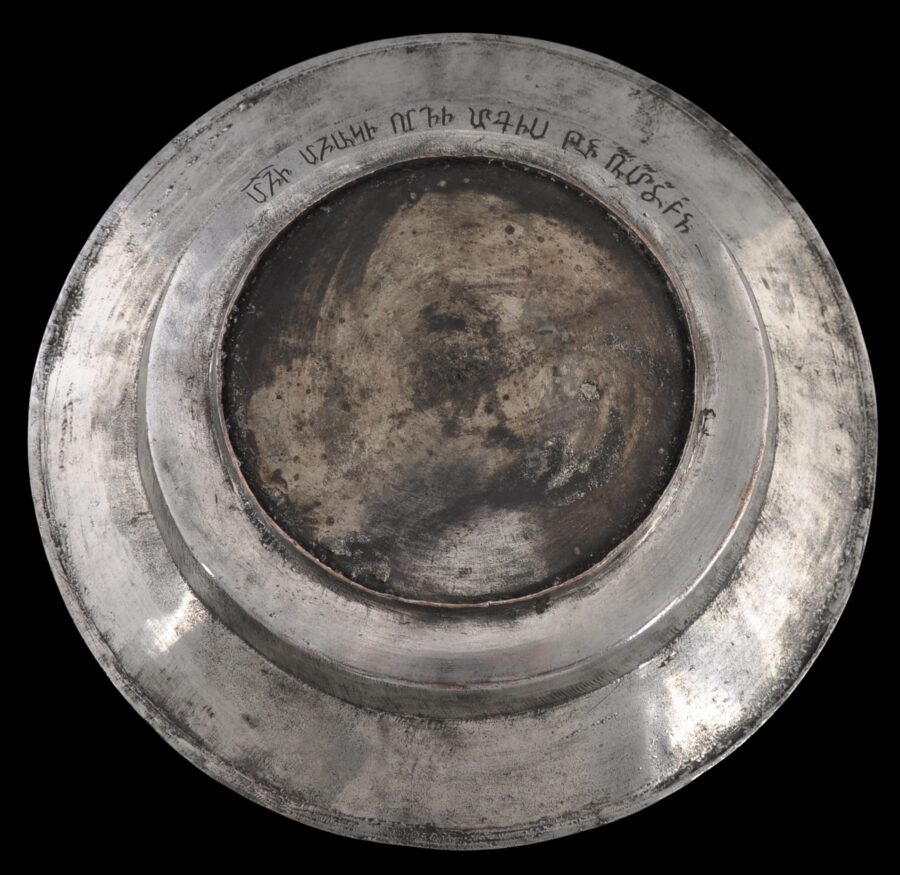Enquiry about object: 9638
Inscribed, Armenian Tinned Copper Covered Tureen & Double Dish Set
Armenia 18th century; dated 1711 and 1803
overal height: approximately 21cm, diameter of the big dish: 24.3cm, diameter of the small dish: 17.5cm, height of tureen: 20.2cm, combined weight: 1,750g
Provenance
UK art market
This set of tinned and engraved copper vessels comprises a larger dish, a smaller dish, and a tureen or jar with a domed cover and high, acorn-like finial.
The practice of tinning copper was felt to make it more suitable for use in conjunction with food consumption.
Each pieces is inscribed and dated.
The tureen is engraved on the side with a stylised Ottoman tugra and dates of 1123 Hijra (approximately 1711 AD). The smaller dish has a similar mark.
The larger dish is engraved on the underside in Armenian script which reads ‘Sarkies, son of Mahdesi [ie one who has been to Jerusalem on a pilgrimage] Mhak(?) [in the year] 1252 [AD 1803]’.
This latter mark is likely to be an ownership or donation mark, and so the dish probably dates to earlier than this given date.
The two dishes are engraved with floral and leaf patterns.
The tureen of hammered and tinned copper has a particularly pleasing shape with lobed sides on the lower half, and a flared foot. It is engraved with leafy borders.
Hassiotis (2010, p. 162) comments that tinned copper items of Armenian origin and which are inscribed usually were intended for donation to an ecclesiastical treasury. Also, that many of the inscribed items in the KalfayanCollection of Armenian Art come from donors with the prefix ‘Mahdesi’ (as with the larger dish here) and says that such a term can be interpreted as ‘pilgrim’ and was applied to members of the Armenian community (both men and women) who had made the pilgrimage to Jerusalem and also became applied to the descendants of such a pilgrim. The use of such a term by the Armenians seems to have been copied from the Muslims who use the prefix ‘Haji’ (for a man) and ‘Haja’ (for a woman) to denote someone who has returned from the pilgrimage to Mecca.
Each of the items here has obvious age but otherwise is in fine condition.
References
Hassiotis, I.K., et al., Aspects of Armenian Art: The Kalfayan Collection, Museum of Byzantine Culture, 2010.











